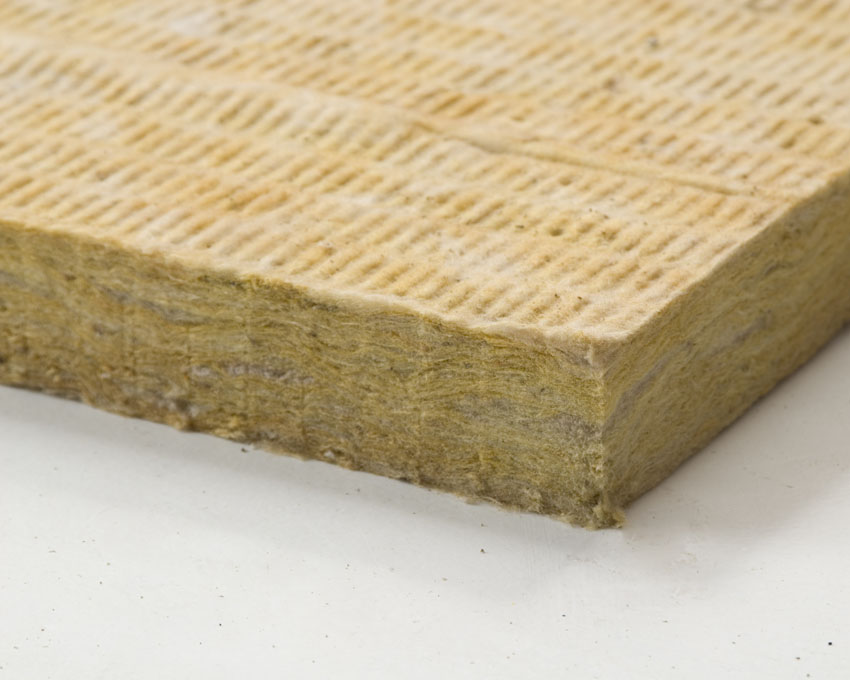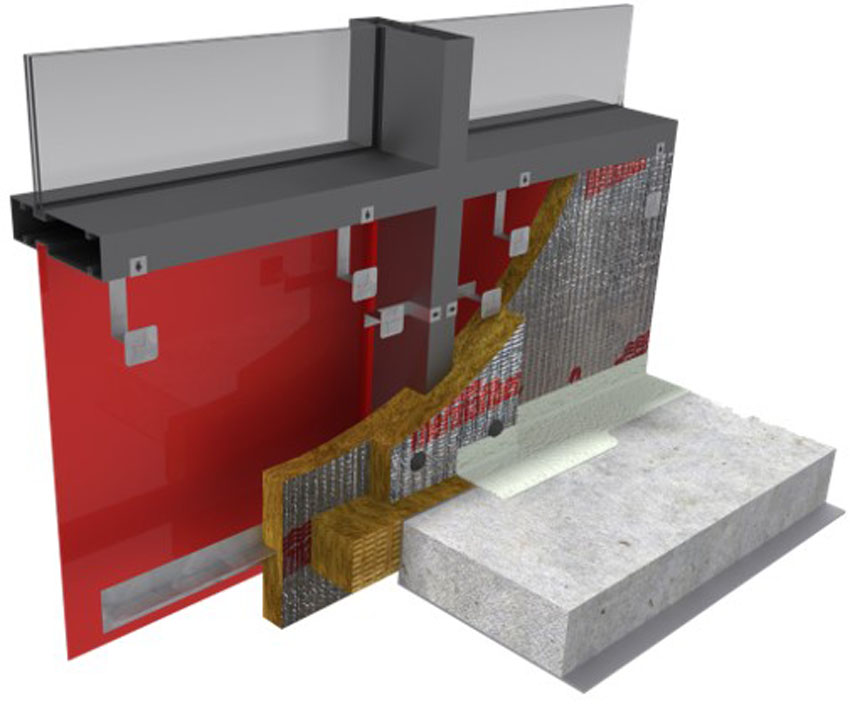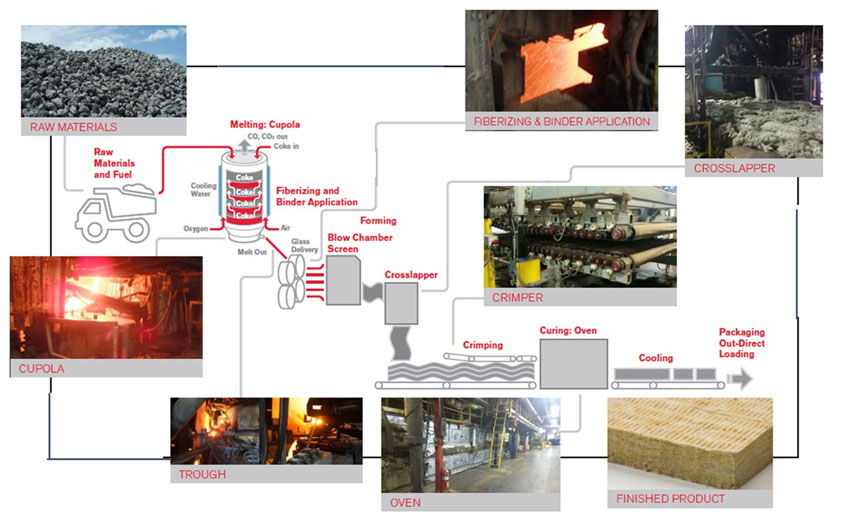The Role of Insulation in Mission-Critical Design
Provide Redundant Moisture Control in the Roof
The roof of a mission-critical building cannot leak, regardless of the weather. Rain, snow, hail, hurricanes or tornadoes must not breach the water membrane in the roof designed to keep moisture at bay. The costs associated with a roof leaking into a mission-critical interior and potentially compromising the functionality of the space can be exorbitant, which explains why architects on these projects often look to create a redundancy in the roof, in the same way that redundancies in electrical and mechanical systems are incorporated into the overall design of the building. Watertight insulation can be used to provide that additional layer of moisture protection.
As an additional benefit of this extra protective layer, certain insulation materials can outlast the material used as the regular roofing membrane, allowing facilities teams and building owners to extend the life of the roof without risking water exposure. This can be incredibly valuable in areas where the logistics around renovating and reroofing a structure are prohibitive. In congested urban areas, for example, there can be severe restrictions on accessing the pathways and work-staging areas necessary to complete this type of project, which also can increase the cost of the renovation.
Improve Fire Performance of the Building Envelope
There is a dramatic difference in the way that different types of insulation respond to an exposure to fire. Some types of insulation melt. Some ignite, and some remain intact after hours of burning at temperatures over 2,000 degrees Fahrenheit. When a fire propagates vertically and laterally across the exterior of a building, the type of insulation in the exterior wall assembly can play an important role in determining how successfully the envelope resists the spread of fire. Selecting an insulating material that can withstand the incredible heat that these fires produce can protect the other combustible materials in the exterior wall assembly and help minimize the damage that results from the fire, allowing more time for people to escape.

In multistory projects, the fire-containment material that is placed in the space between the floor slab and the curtain wall is referred to as safing. Mineral wool safing (shown here) can dramatically improve the fire performance of the envelope.
Reduce Liability from Acts of Terrorism
In 2002, Congress enacted the Support Anti-Terrorism by Fostering Effective Technologies Act, better known as the Safety Act, which provides broad protections from liability to the manufacturers, sellers, subcontractors, suppliers, and purchasers of products designated by the Department of Homeland Security (DHS) as “qualified antiterrorism technology” if they fail to prevent injuries or damage caused by a terrorist attack.

The Support Anti-Terrorism by Fostering Effective Technologies Act, or the Safety Act, provides broad protections from liability when products are used that have been designated by the Department of Homeland Security (DHS) as “qualified antiterrorism technology.”
Initially, the purpose of this legislation was to encourage the innovation of technology that could be used to help the post-9/11 United States in its antiterrorism efforts by removing the threat of enterprise-crushing liability that could result in the fallout of another terrorist attack. Since then, the application of the law has expanded to offer liability coverage to entities making decisions about how to deploy antiterror technologies that have earned the Safety Act designation. Airports, for instance, are getting coverage on the decision-making process they use to determine which type of antiterrorism measures are warranted and the way in which they are used. Stadiums are getting Safety Act coverage on the safety procedures they employ during games and other large events. Coverage is also being provided to building owners and design firms to protect the architectural teams making design decisions about the level, extent, and type of security deployed and embedded in a facility.
Ray Biagini, a partner at Covington & Burling, conceived of and wrote core provisions for the Safety Act. He explains how Safety Act coverage can support the AEC teams working on the design and construction of mission-critical or potentially high-risk targets: “The purpose of the Safety Act is to limit the risk to people and entities who are making decisions about the type of security that should be deployed against possible terror attacks. This is relevant to the design community because there is potential liability that exists if a building that is either under construction or occupied is attacked. A potential plaintiff may say that there was inadequate security designed into the structure or question the vulnerability of the building, and this train of thought has validity today, as terrorist attacks are now considered foreseeable events by many courts. Architects could obtain Safety Act coverage for the processes, procedures, and protocols they use to determine or recommend the nature and extent of security to be embedded in a facility’s architectural design to insure the way in which they chose the safety and security features to incorporate into a project.”
“With the highest form of Safety Act coverage known as ‘Certification’ coverage, protected parties have the presumption of immunity in a situation deemed a terrorist attack by the DHS. This means that if there is an attack on a building and the design team is sued, the plaintiff will have to prove that the design team acted with fraud or willful disregard in submitting its Safety Act application to DHS. If they cannot do that, the lawsuit will be dismissed, which eliminates the need for insurance companies to respond, prevents a drawn-out litigation process, and saves a considerable amount of time and money.”
Designers can also protect themselves, to some extent, by specifying products that have been deemed by the government to be a qualified antiterrorism technology under the Safety Act. As of August 2019, there were more than 1,000 products and services that had earned the Safety Act designation, including some types of perimeter fire-containment insulation and safing, the fire-stop material placed in the space between the floor slab and curtain wall in a multistory construction. Specifying Safety Act-designated products can also provide some liability protection to the architectural design team in the event of an act of terrorism.

A mineral wool perimeter fire-containment solution (shown here) is available as a Safety Act designated product.
Types of Insulation
There are several types of insulation. However, for this course, we will focus on the benefits of using mineral wool and cellular glass insulation in mission-critical facilities.
Mineral Wool
Mineral wool, also known as stone wool, rock wool, and slag wool, is created by combining basalt rock and slag. Slag is a byproduct of the steel industry that is then repurposed into mineral wool instead of being discarded. The slag content in mineral wool typically ranges from 70–75 percent, resulting in high pre-consumer recycled content. The rock and slag are heated into a lava-like material, spun into fibers, cooled, and cut into rigid board, semi-rigid batts, or loose fill final product. Notably absent from this manufacturing process are blowing agents such as hydrofluorocarbons or HFCs.

The mineral wool manufacturing process melts rock and slag, creating fibers that are cured to form batts, rolls, boards, or loose-fill insulation products.
Energy codes, such as the 2018 International Energy Conservation Code (IECC) or ASHRAE 90.1, define minimum thermal resistance or R-value requirements for the opaque thermal envelope to improve the HVAC efficiency and prevent condensation in buildings constructed today. The R-value of mineral wool is typically around R-4.3 per inch.
The use of mineral wool also supports various tenets of sustainable design. Beyond the impressive amount of recycled content it contains, life-cycle analysis demonstrates that after only one month of use, 1 pound of mineral wool insulation saves the same amount of energy used in its manufacture.
Mineral wool batts or rigid boards can be easily cut with saws or serrated knives to fit snuggly into openings, preventing the passage of fire, or secured to the exterior wall as rigid board continuous insulation.









